Atlas V rocket launches NROL-101 spy satellite to orbit
CAPE CANAVERAL, Fla. — United Launch Alliance (ULA) successfully sent an Atlas V rocket into space today (Nov. 13), following a series of delays due to hardware issues and poor weather conditions at the launch site.
The 206-foot-tall (63 meters) rocket blasted off from Space Launch Complex 41 here at Cape Canaveral Air Force Station in Florida at 5:32 p.m. EST (2232 GMT), carrying with it a classified payload for the National Reconnaissance Office, which manages the U.S. government's fleet of spy satellites.
Designated NROL-101, the mission marks ULA's fifth launch so far this year; the company has launched various other payloads for the military as well as NASA's Perseverance Mars rover. The National Reconnaissance Office (NRO) has been stingy with details about the payload, which is typical for these types of missions, but did confirm that the payload was designed and built by the NRO.
Video: Blastoff! US Spy satellite launches atop Atlas V rocket
Related: Declassified US spy satellite photos & designs (gallery)
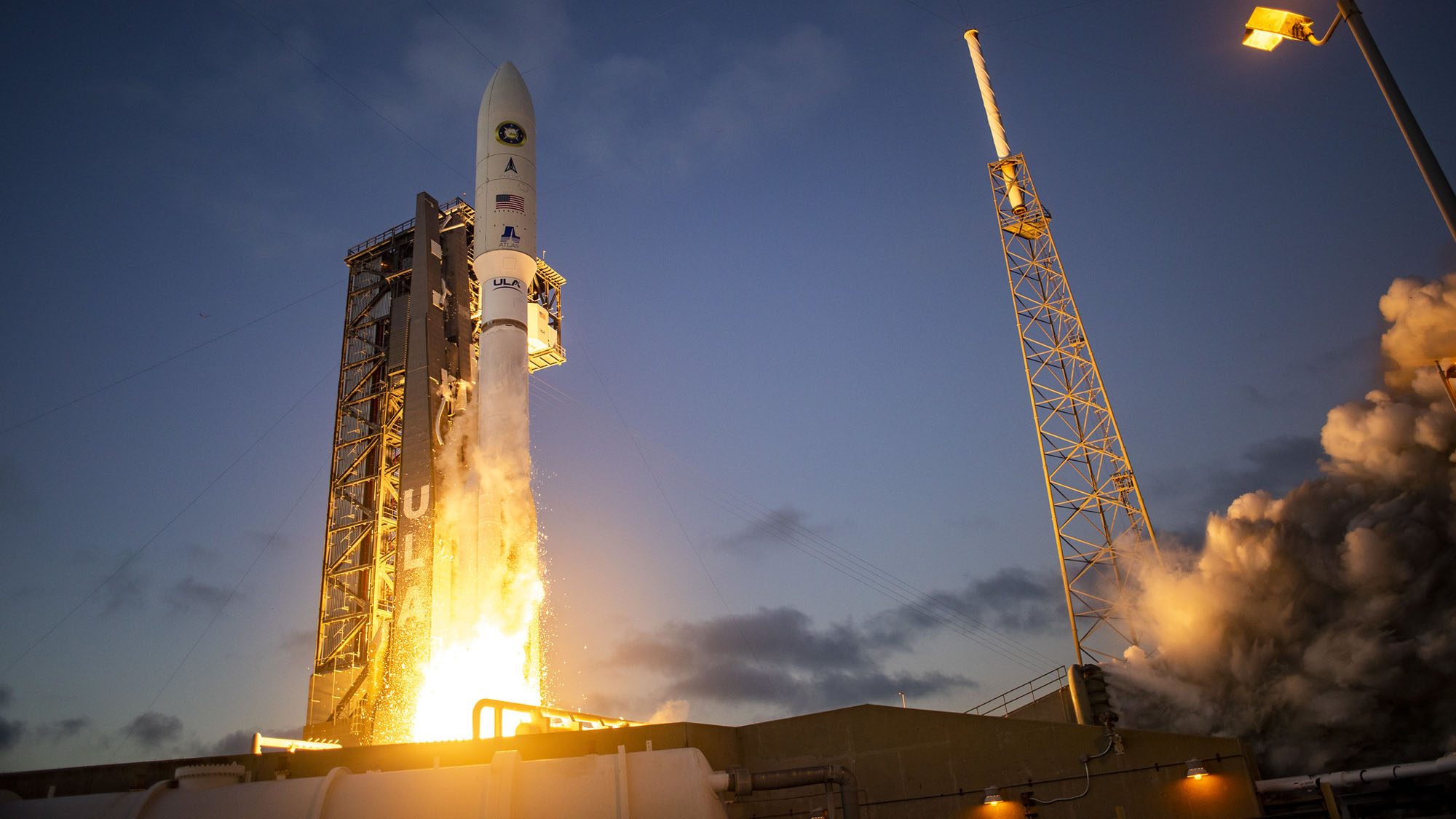
Originally scheduled to launch on Nov. 3, the mission was first delayed 24 hours when the team noticed an issue with the vehicle's environmental control system. A hardware swap was ordered and crews worked to replace a damaged environmental control system duct, which provides conditioned air to the rocket's payload.
The rocket was rolled back to the pad for another attempt at launch. As the countdown progressed, teams noticed an issue with the vehicle's fueling system, which prevented the rocket from being loaded with super chilled oxygen, one of its propellants. The countdown was halted and the launch postponed again.
The most recent delay came from mother nature in the form of Tropical Storm Eta, which strengthened into a hurricane on Monday (Nov. 9) and threatened to bring rain and winds to Florida as the storm cut across the state. Fortunately, Eta was short-lived, allowing weather conditions at the Cape to improve dramatically on Friday.
Get the Space.com Newsletter
Breaking space news, the latest updates on rocket launches, skywatching events and more!
Weather forecasters predicted an 90% chance of favorable conditions at liftoff on Friday night, with the only cause for concern being cumulus clouds.
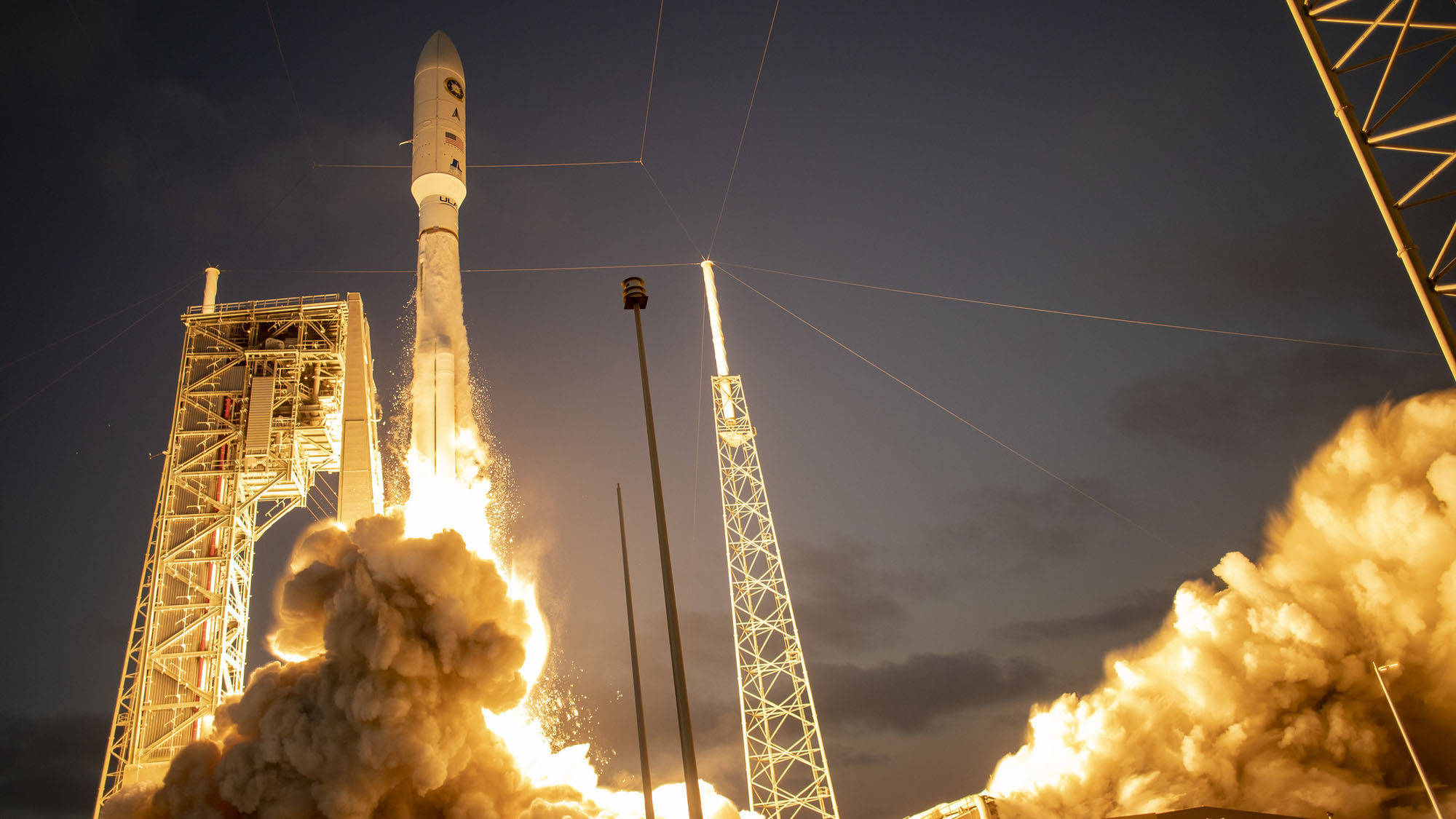
Today's launch marked the 29th mission for the NRO and the 17th such mission launched on an Atlas V. (the other 12 launches on the company's Delta IV rockets.) The NROL-101 mission marked the 86th flight of an Atlas V since the rocket's debut 2002.
The NRO uses these "eyes in the sky" to provide optical and radar imagery of Earth from space, as well as to send and intercept secured communications to various intelligence agencies.
As is usual with this type of mission, the NRO hasn't revealed many details about this launch or its payload. However, warning notices issued to pilots and boaters and a mission profile animation from ULA suggest that the rocket is flying on a northeasterly track that will eventually put it in a high-inclination orbit with regular views of the Northern Hemisphere.
ULA has another government payload sitting on a nearby pad. A Delta IV Heavy is slated to hoist the NROL-44 payload to orbit sometime this year. That mission, which has been grounded due to hardware issues at the pad, was originally slated to take off in August, but has been postponed indefinitely.
Related: Pentagon picks SpaceX, ULA to launch national security missions
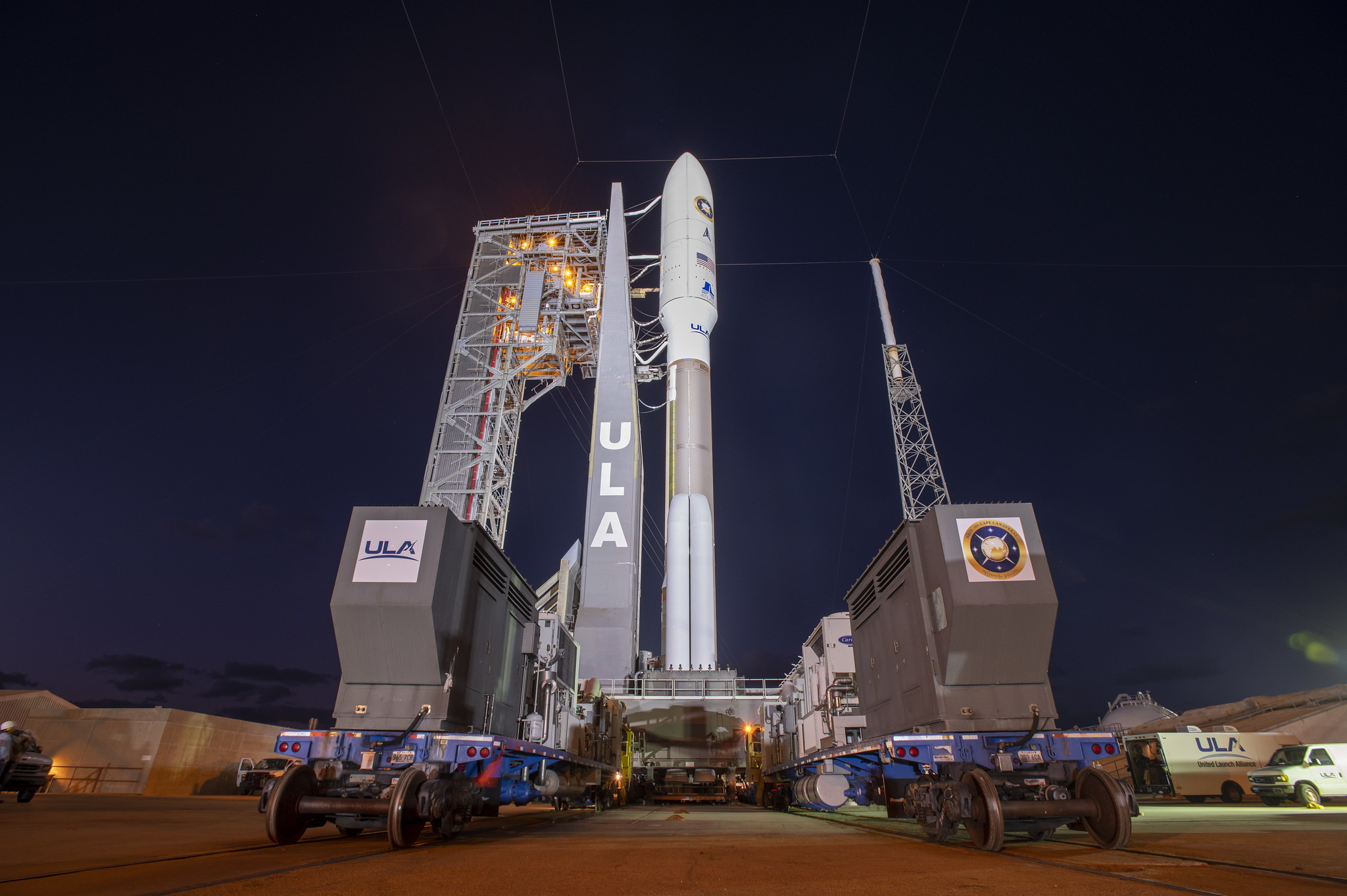
The two-stage Atlas V rolled out to the pad from its nearby integration facility for its fourth launch attempt on Thursday afternoon (Nov. 12). Once in place, crews began to prep the rocket for its flight.
Atlas V is fueled by a mix of liquid oxygen and RP-1, a refined form of kerosene used for spaceflight, and liquid hydrogen in its upper stage, which was loaded into the rocket Friday afternoon. The vehicle flew in the "531" configuration, with three solid rocket motors, a 17.7-foot (5.4 m) diameter payload fairing, marking the first NRO mission to use this variant.
It was the fourth time overall that an Atlas V has flown in the 531 configuration, and the first mission to use the newly upgraded solid rocket motors. This version's three previous flights each carried Advanced Extremely High Frequency (AEHF) communications satellites for the U.S. military.
In photos: Atlas V launches AEHF-6 military satellite for US Space Force
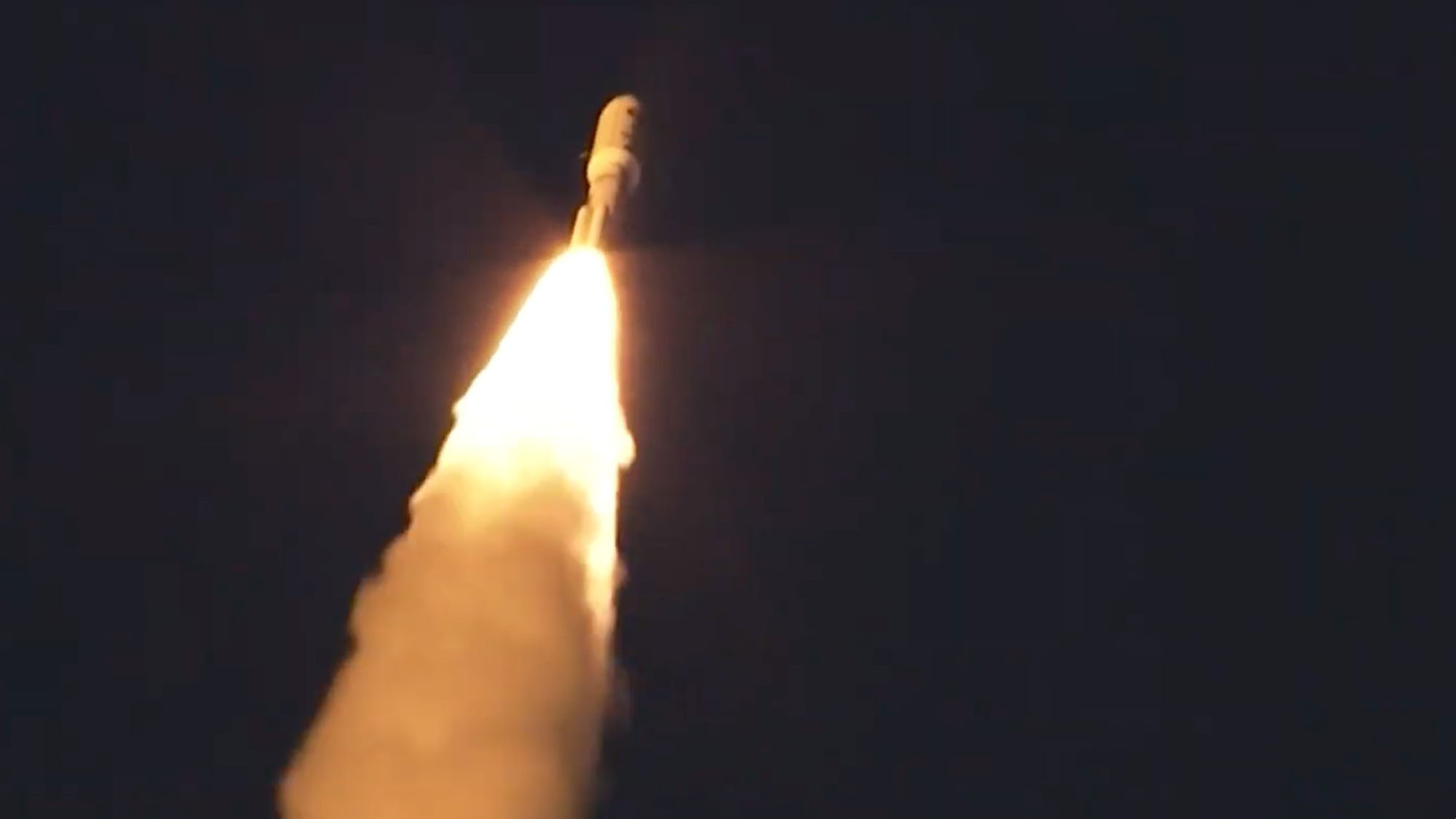
The rocket's strap-on boosters, called GEM 63, are manufactured by Northrop Grumman and were made to replace the previous models made by Aerojet Rocketdyne. Each of the 66-foot-long (20 m) rocket motors packs an extra 373,800 pounds of thrust. According to ULA, the GEM 63's are easier to handle and cost less than previous iterations.
Once ULA's Vulcan Centaur rocket is flying, it will be powered by a beefier version of the solid rocket motors, called the GEM 63XL. By testing a smaller version on the Atlas V, the rocket manufacturer plans to thoroughly test out the GEM's capabilities before strapping one onto a Vulcan.
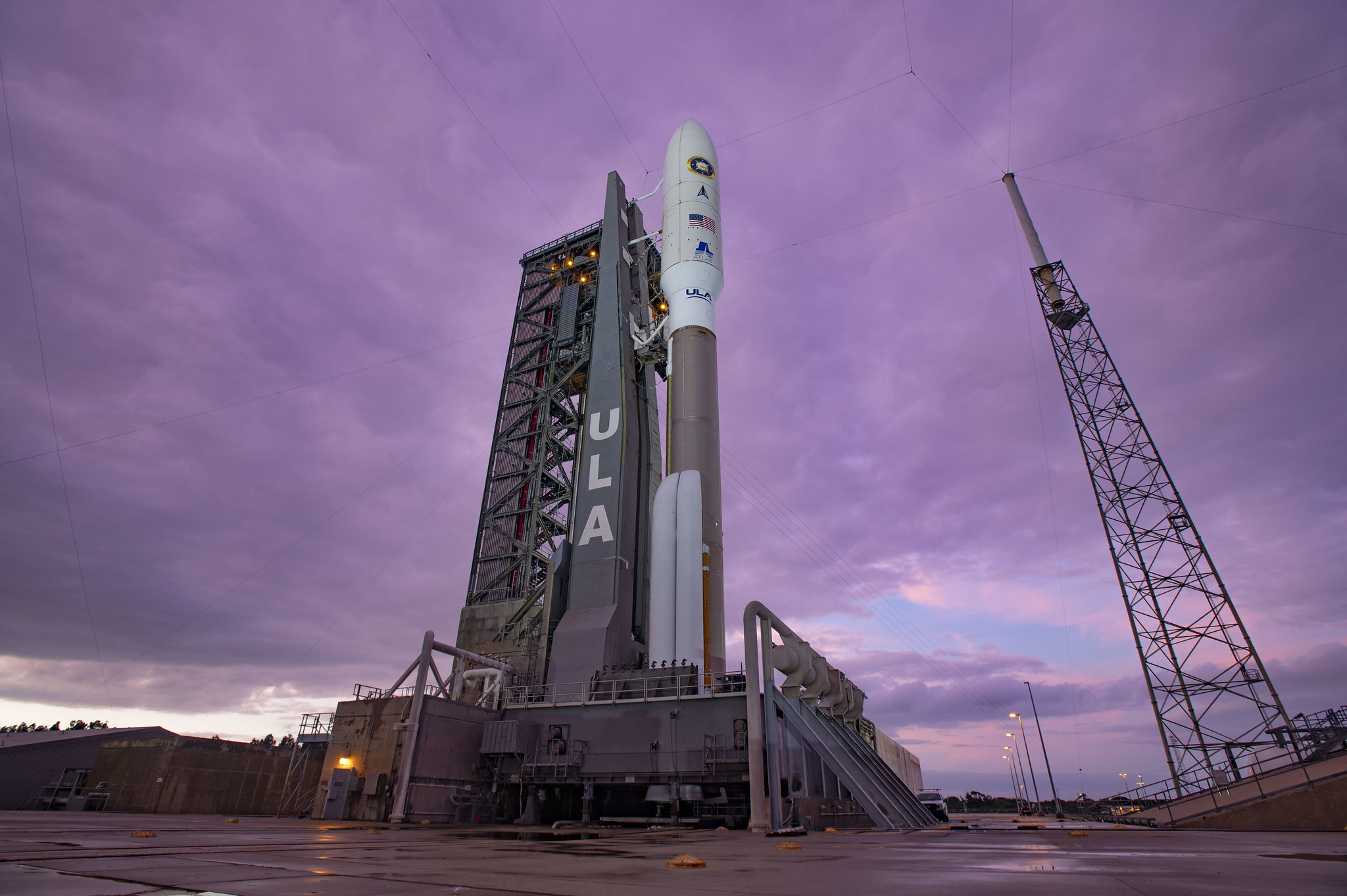
Launch preparations for NROL-101 began a few months ago, on Sept. 11, when teams started stacking the Atlas V rocket inside the integration facility adjacent to the pad. ULA teams started by hoisting the first stage on top of the Atlas mobile launch platform, then added the vehicle's trio of solid rocket motors and finally the upper stage. The payload was installed on Oct. 26.
Double Header
Today's launch was the first of a planned double header this weekend, as SpaceX is preparing to launch its next crew mission to the International Space Station. On Saturday evening (Nov. 14), a Falcon 9 rocket is set to blast off from Pad 39A at NASA's Kennedy Space Center, carrying with it a crew of four astronauts.
If all goes as planned, Mike Hopkins, Shannon Walker, Victor Glover, and Soichi Noguchi of Japan will embark on an 8.5-hour flight to the ISS. The crew is scheduled to stay on station for six months, kicking off the first long-duration mission to launch from Florida. Liftoff is set for 7;49 p.m. EST (0049 GMT on Nov. 15), and the launch will be broadcast live on Space.com.
Follow Amy Thompson on Twitter @astrogingersnap. Follow us on Twitter @Spacedotcom or Facebook.
Join our Space Forums to keep talking space on the latest missions, night sky and more! And if you have a news tip, correction or comment, let us know at: community@space.com.

Amy Thompson is a Florida-based space and science journalist, who joined Space.com as a contributing writer in 2015. She's passionate about all things space and is a huge science and science-fiction geek. Star Wars is her favorite fandom, with that sassy little droid, R2D2 being her favorite. She studied science at the University of Florida, earning a degree in microbiology. Her work has also been published in Newsweek, VICE, Smithsonian, and many more. Now she chases rockets, writing about launches, commercial space, space station science, and everything in between.








